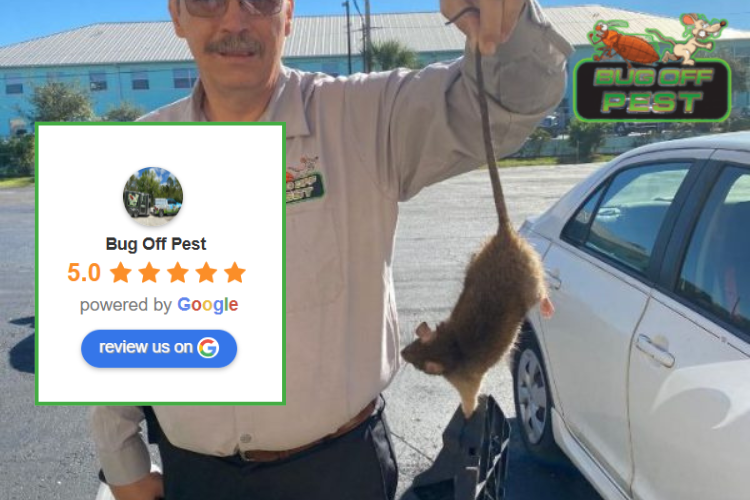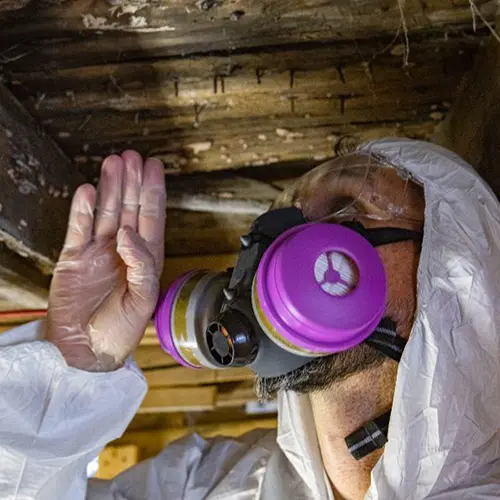Full-service Pest Control Services to Protect Your Property in Port Charlotte
Learn Regarding the current Advancements in Insect Control and Exactly How to Apply Reliable Therapy Solutions
Over the last few years, the area of bug control has observed significant innovations, driven by the demand for lasting and efficient treatment services. Innovative techniques such as Integrated Insect Administration (IPM) combine environment-friendly experiment innovative innovation, enhancing both efficiency and environmental obligation. Moreover, the assimilation of wise modern technologies and DIY methods has equipped individuals to tackle parasite issues better. As we discover these developments, it becomes important to understand exactly how finest to carry out these strategies in different settings to attain optimum outcomes. The ramifications for bug administration methods could be transformative.
Eco-Friendly Pest Control Options
Recently, the demand for green insect control alternatives has actually surged as businesses and property owners alike seek sustainable alternatives to typical chemical treatments. This shift is driven by expanding ecological recognition and a need to decrease the health dangers related to synthetic pesticides.

Environment-friendly insect control methods incorporate a variety of techniques that prioritize using all-natural compounds and methods. Integrated Bug Administration (IPM) is one such method, integrating organic, social, and mechanical methods to handle insect populations while lowering dependence on chemicals (Wildlife removal services). This all natural method highlights prevention with environment manipulation and the introduction of all-natural predators, thus fostering a well balanced environment
One more preferred choice is using organic pesticides stemmed from plants, which have a tendency to be much less damaging to non-target microorganisms. Products like neem oil and diatomaceous earth have gotten grip for their effectiveness in controlling bugs while posturing marginal risks to human health and the setting.
In addition, exclusion techniques, such as securing access points and maintaining sanitation, play a crucial role in eco-friendly pest management. By taking on these sustainable techniques, people and companies can effectively manage insects while promoting a much healthier earth for future generations.
Smart Technology in Bug Management
Innovation is reshaping the landscape of parasite management, with clever modern technology emerging as a pivotal pressure in boosting efficiency and efficiency - Wildlife removal services. The combination of Net of Points (IoT) tools, synthetic knowledge (AI), and information analytics is revolutionizing how insect control experts come close to problems
Smart catches equipped with sensors can find pest activity in real-time, sending out prompt notifies to drivers. This enables prompt responses, reducing damages and minimizing the requirement for comprehensive therapies. Additionally, AI algorithms examine historic information to predict pest habits, making it possible for positive treatments based on environmental conditions and problem patterns.
Drones and automated cars are likewise playing a significant role in bug monitoring, giving aerial evaluations of big locations, recognizing hotspots, and also dispersing targeted treatments. These innovations not only improve operations yet also boost safety and security by restricting human exposure to potentially damaging chemicals.
Furthermore, mobile applications equip consumers to keep an eye on parasite task and accessibility professional advice, promoting a collaborative technique to pest management. Generally, the fostering of wise modern technology is setting a brand-new standard in bug control, emphasizing data-driven decisions and lasting methods that inevitably benefit both home owners and professionals alike.
Integrated Bug Monitoring Techniques
Integrated Parasite Management (IPM) utilizes a holistic strategy to pest control, combining different strategies to properly manage pest populations while minimizing risks to human health and wellness and the atmosphere. IPM focuses on recognizing the pest life process, their natural enemies, and the ecosystem in which they thrive.
One of the fundamental elements of IPM is monitoring pest populations with normal inspections and data collection. This permits the identification of bug limits, determining when intervention is required. Cultural methods, such as plant environment, turning, and sanitation control, are vital in minimizing pest occurrence and advertising plant health.
Mechanical controls, including barriers and catches, are additionally essential in IPM. These approaches can physically eliminate or deter insects without making use of chemicals. When necessary, the cautious application of chemical controls is used, concentrating on targeted treatments that lessen environmental impact.
Education and learning and partnership amongst stakeholders, consisting of farmers, pest control specialists, and the area, are crucial for the effective application of IPM methods. By prioritizing lasting techniques, IPM not just addresses pest issues however likewise fosters a much healthier ecological community.
Biological Control Techniques
Numerous organic control methods are increasingly acknowledged for their effectiveness in managing bug populations while advertising ecological equilibrium. These methods harness natural killers, bloodsuckers, and microorganisms to minimize pest This Site numbers without relying upon synthetic chemicals. The introduction of ladybugs can efficiently manage aphid populaces, while nematodes target soil-dwelling insect larvae.
Furthermore, using microbial chemicals, such as Bacillus thuringiensis (Bt), gives an ecologically pleasant alternative for handling caterpillar parasites. These products especially target pest types, reducing injury to beneficial pests and pollinators. Preservation organic control emphasizes improving environments for natural opponents, such as birds and useful bugs, consequently urging their presence in agricultural systems.
Research remains to expose cutting-edge approaches within this field, such as using scents to interfere with pest breeding patterns or the development of biocontrol representatives via genetic design. Executing these approaches can lead to lasting insect management techniques that mitigate the dependence on chemical treatments, inevitably promoting healthier environments. As awareness of these strategies grows, they are coming to be important elements of incorporated bug monitoring (IPM) approaches, offering a balance between reliable insect control and ecological stewardship.
Do It Yourself Parasite Control Solutions
As homeowners look for efficient means to deal with bug concerns, do it yourself parasite control remedies have actually acquired popularity for their ease of access and cost-effectiveness. These techniques equip people to resolve infestations utilizing easily available products and techniques, frequently without the demand for professional intervention.

Furthermore, keeping proper cleanliness and regular assessments can stop pest access Learn More and nesting (Wildlife removal services). Basic practices, such as securing splits, getting rid of food sources, and decluttering, can substantially reduce parasite populaces. Traps, both homemade and readily available, can also offer efficient remedies for surveillance and regulating specific pests like rats or pests

Conclusion
The combination of eco-friendly parasite control alternatives, wise modern technology, and ingenious administration strategies presents an extensive approach to efficient bug monitoring. By welcoming Integrated Parasite Administration (IPM) and making use of biological control approaches, alongside DIY services, accountable and lasting parasite control can be attained. These improvements not only boost the performance of bug monitoring methods but additionally add to a healthier setting. Applying these methods fosters a well balanced community while efficiently dealing with pest populations.
Eco-friendly bug control approaches incorporate an array of strategies that prioritize the use of natural compounds and methods. Integrated Parasite Monitoring (IPM) is one such approach, combining biological, cultural, and mechanical techniques to take care of pest populations while lowering Bonuses reliance on chemicals. As understanding of these strategies expands, they are becoming essential elements of integrated insect administration (IPM) methods, using an equilibrium between efficient insect control and environmental stewardship.
The combination of green pest control options, smart technology, and innovative administration techniques provides a detailed strategy to reliable parasite monitoring. By welcoming Integrated Bug Monitoring (IPM) and making use of biological control techniques, together with Do it yourself options, responsible and lasting parasite control can be attained.